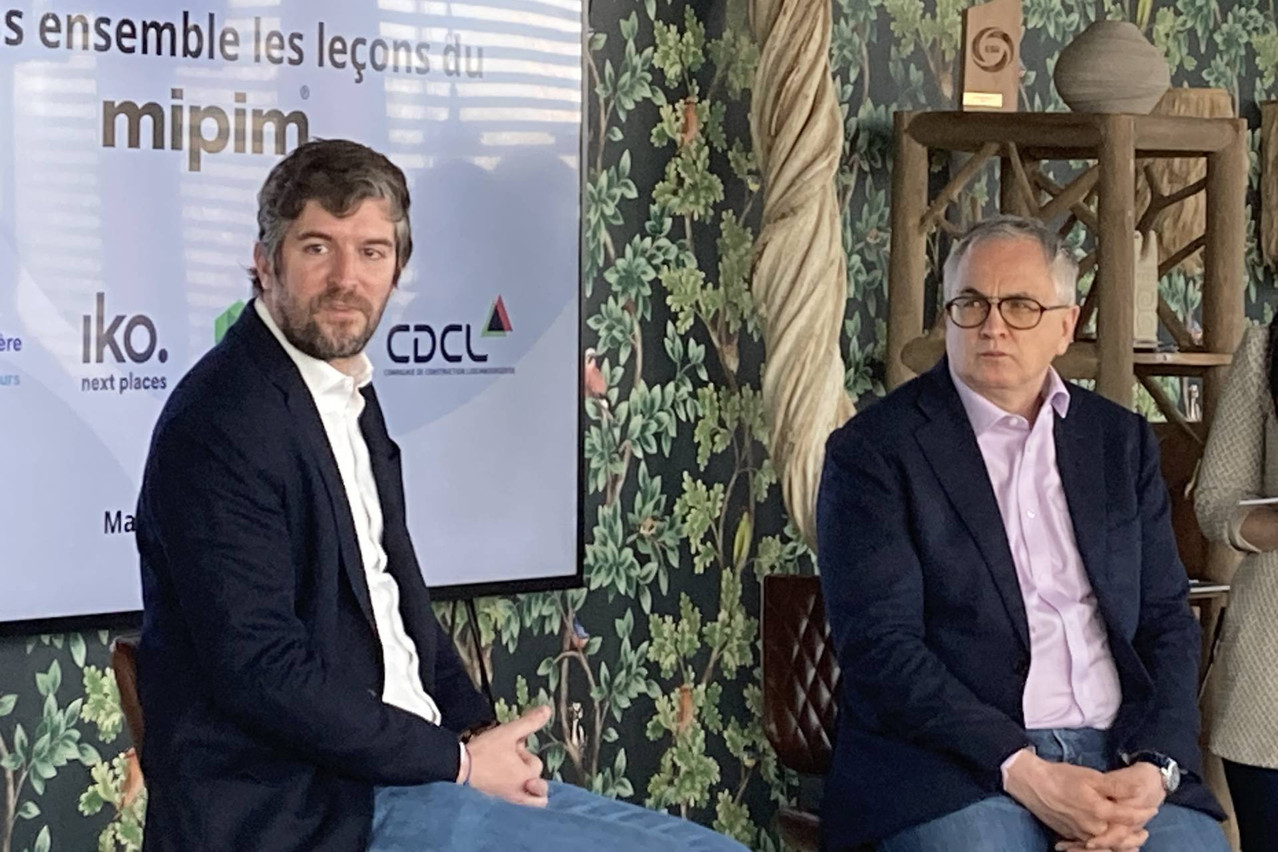The first speech was devoted to an assessment of the last 12 months and the outlook, both at European and Luxembourg levels. Speakers included chairman of the Developer Section of the Chambre immobilière and , spokesman for the developers’ section of the real estate chamber.
1. European mood remains reserved, but there’s hope
Many European countries are experiencing the same tense situation in the property sector, linked to higher bank lending rates than in the 2020-2022 period and a climate of caution in the face of geopolitical uncertainties. It remains difficult to convince investors, but rental demand is still there. We can also see that some transactions remain high, which shows that the market can still be buoyant. The European Commission has realised that certain standards need to be reviewed to facilitate the creation of affordable housing, and working groups have been set up, notably with Build Europe. The is seen as good news.
2. Government measures are helping, but there are still levers for action
At the Luxembourg level, government aid is helping the sector, but is still having a timid effect. The Chambre immobilière emphasises that it has worked well with the government to put measures in place. There are still points to work on, such as the introduction of a zero-interest loan for first-time buyers, aid for legal entities wishing to invest in housing, or the introduction of aid that is better suited to single-person households rather than families, in order to correlate with the reality of housing occupancy. The next major issue will be the reform of the civil code with regard to VEFA (sales of residential property in the future state of completion (vente en l’état futur d'achèvement), which should help to restore confidence between buyers and developers, a key issue in this crisis. We also need to go further on public-private partnerships (PPPs) to create affordable rental housing. The conditions of access to affordable housing--which are not the same for public and private developers--also need to be reviewed. Another avenue would be to introduce the bullet loan system.

Idriss Goossens, co-founder of Luxproptech and Philippe Mancini, senior business consultant at AI 5. Photo: Céline Coubray
The second speech was dedicated to the impact of artificial intelligence in the real estate business, with Idriss Goossens, co-founder of Luxproptech and Philippe Mancini, senior business consultant at AI 5.
3. Most important thing: identifying use cases where AI can be employed
Many tasks can be supported by the use of artificial intelligence, including all repetitive tasks. Examples were given of use cases where AI is of interest to the real estate sector: generating responses to invitations to tender, reviewing contracts or answering questions about town planning schemes, for instance. Inowai has used AI to improve the search platform by making it more intuitive, to search by street, to provide information on the proximity of a school, public transport, etc. AI can also be used for transactional work following a visit and for compiling an administrative file or reminders. It can help make virtual visits in several languages, an interesting idea for a country as multicultural as Luxembourg.
4. Data, data, data
Artificial intelligence can only be effective if it is well fed. To do this, it needs to be supplied with the right data. Companies must therefore make a point of correctly identifying and listing the information that is useful to them, classifying it properly and sharing it correctly. Without this work, which is certainly tedious but essential, the result will not be effective.

Bruno Renders, chairman of the Conseil national de la construction durable (CNCD) and the Conseil pour le Développement Économique de la Construction (CDEC) and Julien L’Hoest, administrator at the consultancy firm Energie et Environnement. Photo: Céline Coubray
The third presentation focused on carbon initiatives and the economic context. The speakers were , chairman of the Conseil national de la construction durable (CNCD) and the Conseil pour le Développement Économique de la Construction (CDEC), and Julien L’Hoest, director of the consultancy firm Energie et Environnement.
5. Decarbonisation as a holistic approach
Decarbonisation is no longer seen solely in terms of energy performance, but in a much more holistic way, encompassing the entire building cycle, from design to production, use and deconstruction. It’s no longer a question of improving the situation, but of completely removing carbon from the equation. To do this, we still need to work on the tools that enable us to analyse the sources of carbon, in order to neutralise them.
6. There are still obstacles to overcome
There are still administrative obstacles to this approach and the regulations need to be more in line with these objectives. It is important to make sobriety attractive and to promote reuse culturally.
This article was originally published in .
